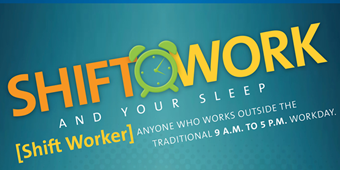Ready. Set. Power Nap!

Find Your Perfect Match
Answer a few questions and we'll provide you with a list of primary care providers that best fit your needs.
How much sleep did you get last night? Are you one of the estimated three out of 10 Americans who regularly sleep six or fewer hours a night? You may be too tired to notice that consistently skipping a full night’s sleep puts a lot at risk – from your energy level and attention span to your memory, your impulsiveness and your control over negative emotional responses. The National Sleep Foundation, who studies these things, says we can thank our busy lifestyles for our increasing symptoms of sleep deprivation.
Daytime naps can’t replace adequate or good quality nighttime sleep. But a short power nap of 20 minutes can help improve mood, alertness and performance, usually without leaving you feeling groggy or interfering with night sleep.
Taking an afternoon siesta puts you in good company. Famous afternoon nappers include Albert Einstein, Winston Churchill, John F. Kennedy, Ronald Reagan and Thomas Edison. Workday napping, timed for your breaks of course, may help you be more productive. In a 2015 study, researchers at the University of Michigan found that taking a nap at work can help ease frustration, offset reckless behavior and boost workplace safety. Nappers in that study also reported feeling more patient and less impulsive.
All Naps Are Not the Same
Naps fall into three types:
- Planned or Preparatory Napping: These are naps you take before you actually get sleepy. Grab 40 winks when you know that you will be up later than your normal bedtime or to avoid getting drowsy too early.
- Emergency Napping: These are must-do naps when your eyes droop, your brain fogs and you just can’t continue what you are doing. Stop and snooze to combat drowsy driving or fatigue while using heavy machinery.
- Habitual Napping: The preschool crowd knows all about these. Little ones tend to fall asleep at about the same time each afternoon. Adults may take a short nap after lunch each day.
How to Nap Well
Set yourself up to really rest during your power nap:
- Find a quiet spot, and set the room temperature to “just right.”
- Dim the lights that keep you from falling asleep.
- Turn off the distractions. This includes your cell phone, computer and television.
- Nap at the right time. Wait too long (after 3 pm) and you might have trouble falling asleep at your regular bedtime. Try to nap too early in the day, and your body may not be ready for more sleep.
Why Nap?
A good nap can be the gift that keeps on giving with benefits like improved alertness, stress relief and emotional stability.
- Naps can restore alertness, enhance performance, and reduce mistakes and accidents. NASA studied sleepy military pilots and astronauts and found that napping improved their performance by 34 percent and alertness by 100 percent.
- A nap not only can boost alertness right after you nap, it also may extend your alertness a few hours later in the day.
- Naps can help you readjust from jet lag. It’s also prescribed for people with narcolepsy, a sleep disorder characterized by the onset of sudden, unexpected sleep.
- Naps can act like a mini-vacation to relax and rejuvenate you.
- Short naps before driving have been shown to reduce your risk of nodding off at the wheel. Sleep experts recommend that if you feel drowsy when driving, you should immediately pull over to a rest area, drink something with caffeine and take a 20-minute nap before you head out on the road again.
- Naps – especially combined with caffeine – can improve alertness and performance for night shift workers whose schedules don’t allow for regular nighttime sleep.
What’s the Downside of Napping?
Some studies suggest that long power naps during the day (over one hour) can shorten your life. One possible reason may be that people who need to nap that long during the day may actually have an undiagnosed health condition. Napping has also been linked to diseases such as diabetes and depression.
Workday napping, timed for your breaks of course, may help you be more productive.
And there are more reasons to be careful about indulging in too much of a good thing:
- Longer naps of more than 20 minutes can leave you with sleep inertia – the feeling of grogginess and disorientation that comes with awakening from a deep sleep.
Sleep inertia may only last a short while but can make it tough if you have to get up to speed immediately on awakening. People who are sleep-deprived or who take long naps may feel the effects more strongly. - Excessive napping can lower the quality of your nighttime slumber. If you already have trouble sleeping through the night, a nap may only increase your problems.
- Naps don’t give your body enough time in deep sleep, the most restorative sleep stage.
10 Minutes Is All You Need
A study in the journal Sleep compared naps of various lengths with no napping. The researchers concluded that a 10-minute nap produced the most benefit in reduced sleepiness and improved cognitive performance. A nap of 30 minutes or longer was more likely to produce sleep inertia.
Keep in mind that getting enough nighttime sleep every night is still the best way to stay alert and feel your best. But when fatigue sets in, a quick nap can do wonders to keep your “get up and go” going at peak performance.
Find Your Perfect Match
Answer a few questions and we'll provide you with a list of primary care providers that best fit your needs.
Source: National Sleep Foundation




